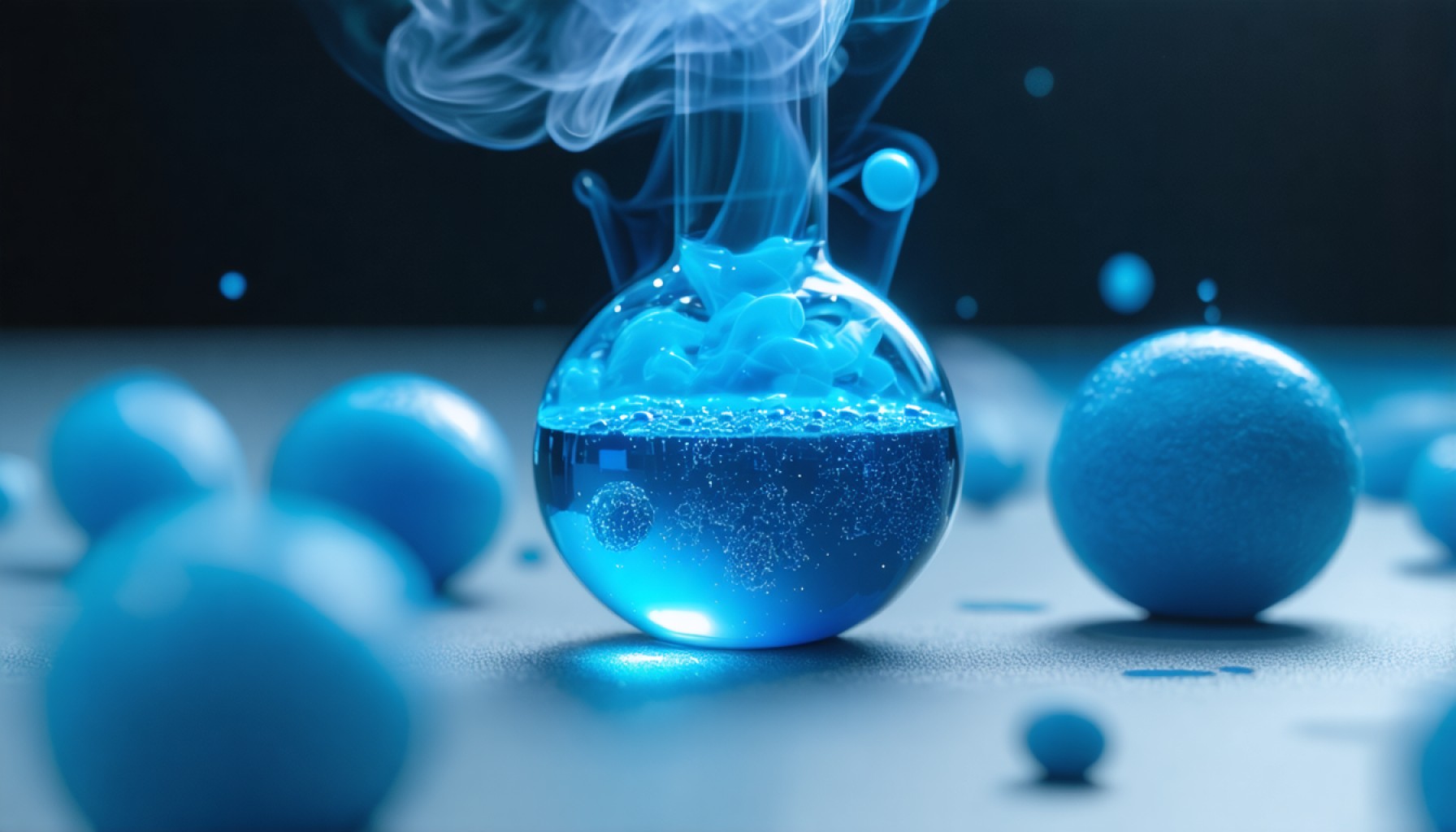- The transformative process of Co2Mo3O8 in electrochemical water splitting enhances catalyst efficiency.
- Co(OH)2@Co2Mo3O8 catalyst formation occurs during electric potential changes, boosting reaction speed.
- MoO42− ions dissolve into the liquid, transforming into Mo2O72−, enhancing proton attraction and hydrogen release.
- The catalyst achieves 99.9% Faradaic efficiency and maintains a hydrogen generation rate of 1.85 mol/hour at -0.4V.
- Durability is proven as the catalyst operates stably for a month at high-current densities.
- These findings offer insights into sustainable, scalable hydrogen production and a shift in catalyst design paradigms.
Unravel the secrets of a transformative chemical dance where precatalysts evolve and electrolytes shift, igniting a renewed efficiency in electrochemical water splitting. Imagine the enigmatic Co2Mo3O8 as our star, quietly morphing under changing electric potentials. This transformation births an enduring Co(OH)2@Co2Mo3O8 catalyst, its inner strength unveiled. As it reshapes, fragments of the original material escape, dissolving as MoO42− ions into the surrounding liquid.
At this newly formed Co(OH)2/Co2Mo3O8 interface, magic happens—the reaction speeds, driving the Volmer reaction forward as if fueled by an unseen hand. MoO42− ions, now transformed further into Mo2O72−, play their part, enhancing proton attraction and boosting the release of hydrogen molecules.
The upshot of this intricate choreography? A catalyst that not only boasts impressive Faradaic efficiency—99.9% to be exact—but also sustains a robust hydrogen generation rate. Operating at a sweet spot of -0.4V versus the reversible hydrogen electrode, it achieves an output of 1.85 mol per hour. It’s not just a fleeting triumph; this innovation stands the test of time, maintaining stability over a full month at high-current densities.
The takeaway: When we comprehend the dual impact of catalyst transformation and electrolyte dynamics, we edge closer to a future where hydrogen production is not just sustainable but scalable. These insights into Co2Mo3O8 redefine what’s possible, heralding a paradigm shift in catalyst design, and spotlighting a harmonious blend of durability and industrial-strength performance.
This New Catalyst Could Revolutionize Hydrogen Production – Here’s How
Understanding the Breakthrough in Electrochemical Water Splitting
The latest innovation in electrochemical water splitting leverages a transformative process that enhances hydrogen production efficiency and stability. The key player in this process is the Co2Mo3O8 compound, which transforms into a highly effective Co(OH)2@Co2Mo3O8 catalyst, boasting an impressive Faradaic efficiency of 99.9%. This breakthrough is not only groundbreaking in terms of its chemistry but also holds significant potential for industrial applications.
How-To Steps & Life Hacks
1. Preparation of Co2Mo3O8: Begin with the synthesis of Co2Mo3O8 through standard solid-state methods. This involves mixing stoichiometric amounts of cobalt and molybdenum precursors.
2. Catalyst Activation: Expose Co2Mo3O8 to varying electric potentials to initiate the transformation into Co(OH)2@Co2Mo3O8, enhancing catalytic properties.
3. Optimization of Electrolyte Conditions: Use specific electrolytes that facilitate the dissolution of the material and transformation into MoO42− and Mo2O72− ions, thereby improving hydrogen release.
Real-World Use Cases
– Renewable Energy: By boosting the efficiency and stability of electrochemical water splitting, this catalyst can be vital in hydrogen fuel production, offering a sustainable energy source.
– Industrial Applications: The robust performance across high-current densities makes this catalyst ideal for industries requiring large-scale hydrogen production.
Market Forecasts & Industry Trends
The market for electrocatalysis and hydrogen production is poised for substantial growth. The global hydrogen generation market size was valued at USD 145.67 billion in 2021, and it is expected to expand at a compound annual growth rate (CAGR) of 9.3% through 2030. Advances in catalyst technology, such as the Co(OH)2@Co2Mo3O8, are expected to drive down the cost of hydrogen, further accelerating market growth.
Pros & Cons Overview
Pros:
– High Efficiency: The catalyst achieves near-perfect Faradaic efficiency.
– Stability: Maintains stability over a month at high current densities.
– Scalability: Offers potential for industrial scalability.
Cons:
– Complexity of Catalyst Preparation: Requires precise conditions and control over synthesis.
– Material Cost: Initial investment in Co2Mo3O8 and related materials might be high.
Controversies & Limitations
While the catalyst demonstrates great promise, there are challenges related to the scalability of production and the high cost of materials involved. Additionally, further studies are required to assess long-term environmental implications of the materials used.
Insights & Predictions
The insights gained from understanding the dual impact of catalyst transformation and electrolyte dynamics can drive the next generation of catalyst designs. As the demand for green energy sources increases, innovation in this area will be instrumental in achieving scalable and sustainable hydrogen production.
Actionable Recommendations
– Industries looking to transition to hydrogen should consider adopting advanced catalysts like Co(OH)2@Co2Mo3O8 to enhance efficiency and reduce costs.
– Researchers are encouraged to explore alternate methods of synthesizing the catalyst to decrease production costs.
– Policy-makers should promote investments in hydrogen technology and infrastructure to leverage these advancements.
For more information about the latest developments in catalysts and hydrogen production, explore key industry resources such as Nature and ScienceDirect.


